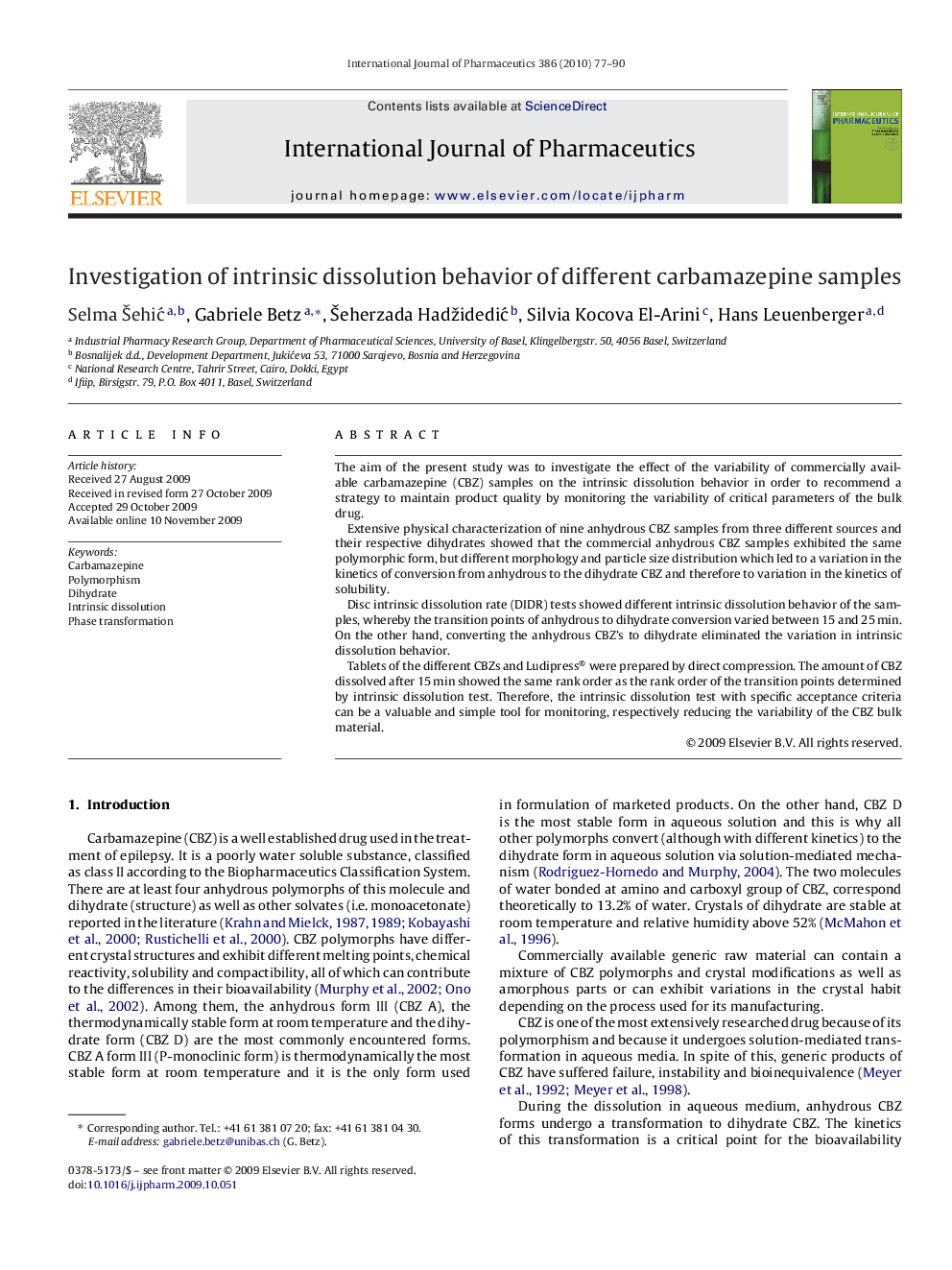| Article ID | Journal | Published Year | Pages | File Type |
|---|---|---|---|---|
| 2504516 | International Journal of Pharmaceutics | 2010 | 14 Pages |
The aim of the present study was to investigate the effect of the variability of commercially available carbamazepine (CBZ) samples on the intrinsic dissolution behavior in order to recommend a strategy to maintain product quality by monitoring the variability of critical parameters of the bulk drug.Extensive physical characterization of nine anhydrous CBZ samples from three different sources and their respective dihydrates showed that the commercial anhydrous CBZ samples exhibited the same polymorphic form, but different morphology and particle size distribution which led to a variation in the kinetics of conversion from anhydrous to the dihydrate CBZ and therefore to variation in the kinetics of solubility.Disc intrinsic dissolution rate (DIDR) tests showed different intrinsic dissolution behavior of the samples, whereby the transition points of anhydrous to dihydrate conversion varied between 15 and 25 min. On the other hand, converting the anhydrous CBZ's to dihydrate eliminated the variation in intrinsic dissolution behavior.Tablets of the different CBZs and Ludipress® were prepared by direct compression. The amount of CBZ dissolved after 15 min showed the same rank order as the rank order of the transition points determined by intrinsic dissolution test. Therefore, the intrinsic dissolution test with specific acceptance criteria can be a valuable and simple tool for monitoring, respectively reducing the variability of the CBZ bulk material.
